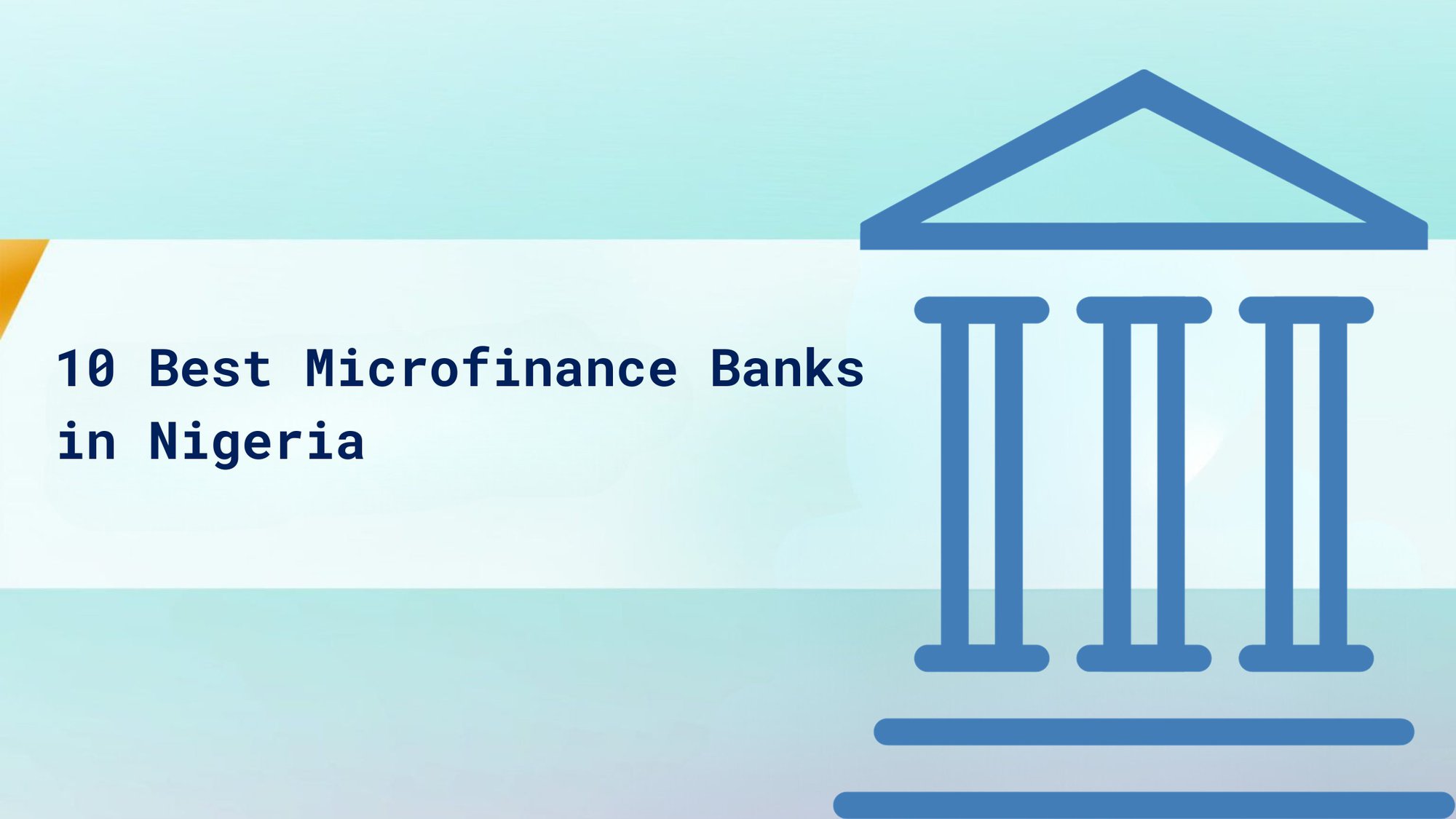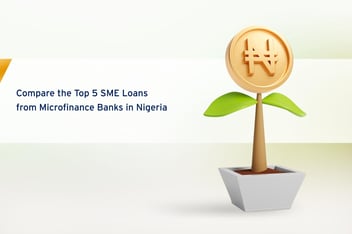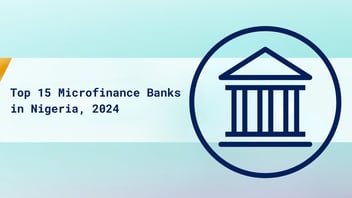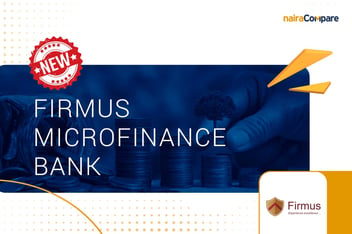
10 Best Microfinance Banks in Nigeria
Microfinance banks play a critical role in expanding financial access and empowering low-income earners in Nigeria. With innovative services like quick loans, digital banking, and customer-centric offerings, the top microfinance banks are driving financial inclusion. This guide explores the best microfinance banks in Nigeria.
Understanding Microfinance Banks in Nigeria
Microfinance banks (MFBs) are specialized deposit-taking institutions that provide financial services to Nigeria's unbanked and underserved populations. As opposed to commercial banks that target corporate clients and high-networth individuals, MFBs cater to low-income households, micro-entrepreneurs, smallholder farmers, and other marginalized groups.
With over 40 million Nigerians lacking access to formal financial services, MFBs play a critical role in democratizing finance. Through microcredit, savings, insurance, and other offerings, they empower Nigerians to smooth consumption, mitigate risks, start businesses, and invest in income-generating activities.
While interest rates are often higher than commercial banks, microfinance banks have more flexible collateral requirements and streamlined loan processing. This facilitates access to finance for microenterprises and low-income households often excluded by mainstream banks. Ultimately, by spurring entrepreneurship and unlocking capital, MFBs can catalyze broad-based economic growth.
The Top 10 Microfinance Banks in Nigeria
With hundreds of microfinance banks operating in Nigeria, choosing the right provider can be a challenge. Here are 10 of the leading and most innovative MFBs advancing financial inclusion:
LAPO Microfinance Bank
The largest microfinance bank in Nigeria with over 6 million customers and 340 branches nationwide. LAPO provides microloans, savings accounts, microinsurance and other services tailored to microentrepreneurs and low-income households. Their social mission and focus on impact investing sets them apart.
● Net Worth: NGN 353 billion (~$700 million USD)
● Impact: Supported over 1 million new businesses through microcredit programs.
ACCION Microfinance Bank
Originally launching as a microfinance NGO, ACCION obtained a national banking license in 2020. Their app-based banking and digital lending platforms are expanding financial access.
● History: Originally founded in 2007 as ACCION Microfinance Nigeria.
● Digital Innovation: First full-service digital banking platform offered by a microfinance bank.
AB Microfinance Bank
One of the fastest growing MFBs in Nigeria with over 200 branches across 36 states. Offers quick business and personal loans along with microinsurance, savings accounts, and other services.
● Established: 2008
● Presence: Over 1 million customers served nationwide.
Assets Microfinance Bank
Providing microloans, savings accounts, and other financial services focused on retail customers and MSMEs. Assets MFB differs with strong customer service and product personalization.
● Offerings: Flexible loan products like salary advances and special programs for female entrepreneurs.
CIT Microfinance Bank
This MFB provides personal loans, business loans, and access to savings and investment portfolios at competitive interest rates to empower small and medium business owners. CIT also offers education loans, asset loans, rent loans, and more tailored services.
● Sectors Served: MSMEs, entrepreneurs, salary earners
● Loan Types: Business loans, asset financing, employee loans, school fees financing
KUDA Microfinance Bank
A fully digital bank with no physical branches. Kuda provides app-based banking services and quick, unsecured loans to over 1 million customers.
● Net Worth: NGN 4 billion (~$8 million USD)
● Offerings: Instant salary advances, free transfers, automated savings, and personal & business loans through its banking app.
Mutual Benefits Microfinance Bank
Mutual Benefits Microfinance Bank is a digital bank that offers zero-fee banking, personalized account numbers, and instant settlements. You can also earn money by referring others, creating communities, and providing banking services. Mutual Benefits Microfinance Bank also supports multiple payment channels and QR code payments¹.
Mutual Benefits Microfinance Bank offers various types of loans, such as personal loans, business loans, and access to savings and investment portfolios at competitive interest rates. It also offers education loans, asset loans, rent loans, and more². The loan amount and repayment period depend on the loan type and the borrower's capacity.
Mutual Benefits Microfinance Bank serves different sectors, such as individuals, groups, small and medium enterprises (SMEs), and low-income earners. It aims to empower its customers by providing financial services in a sustainable, ethical and profitable manner.
BoI Microfinance Bank
A subsidiary of Bank of Industry focused on providing microloans and capacity building services to microenterprises and cooperatives. BoI MFB also offers savings accounts, microinsurance and convenient agent banking.
● Ownership: Wholly owned by Bank of Industry
● Programs: Targeted lending and training for youth and women entrepreneurs.
VFD Microfinance Bank (VBank)
A subsidiary of VFD Group Plc providing digital banking, quick loans, investment options and microinsurance. VBank focuses on easy-to-use mobile banking services.
● Parent Company: VFD Group – a leading Nigerian fintech company.
● Digital Offerings: Digitized account opening, lending, and money transfers.
Want more content like this? Sign Up!
Innovative Trends in Nigerian Microfinance
Many of the leading MFBs are leveraging technology to drive financial inclusion through digital banking solutions. For instance, ACCION and Kuda offer fully functional mobile apps for seamless banking. Others like VFD Microfinance are digitizing key processes to improve customer experience. Biometric identity verification and expanded use of mobile money are other emerging trends. Ultimately, these digitization efforts are expanding access and better serving the underbanked.
LAPO Microfinance Bank has also rolled out solar-powered mobile branches to reach rural communities with limited infrastructure. Meanwhile, Assets Microfinance Bank personalizes services using data analytics to match customers with the right products. Looking ahead, technology and customer-centricity will define the future of microfinance.
Microfinance Services and Offerings
Microfinance banks provide a range of products catering to the needs of low-income individuals and micro-enterprises. This includes:
- Microcredit: Small, short-term loans supporting business activities and consumption smoothing.
- Savings: Basic deposit accounts to safely accumulate funds and earn interest.
- Microinsurance: Protection against risks like death, medical emergencies, or property damage.
- Money transfers: Enables direct payments and cash transfers for unbanked customers.
Many MFBs also offer more unique products like solar loans for adopting renewable energy, school loans for educational expenses, and agricultural financing. Mutual Trust even provides financing for smartphone purchases – recognizing their economic empowerment potential through digital access.
By tailoring offerings to the needs of the disadvantaged, microfinance banks enable greater financial access and socioeconomic mobility.
Choosing the Right Microfinance Bank
With so many options, it's important to select the right microfinance bank for your needs by considering:
- Interest Rates: Compare rates across banks to find the most competitive pricing.
- Proximity: Opt for a bank with branches or mobile presence near where you live and work.
- Offerings: Assess which bank provides the services and loan products you require.
- Reviews: Read customer feedback to evaluate quality of service.
- Digital Convenience: If you prefer digital banking, choose a provider with a robust online/mobile platform.
By comparing factors like pricing, location, products and reputation, you can determine the optimal microfinance bank for your financial needs. Don't hesitate to ask questions and get clarity before committing.
The Future of Microfinance in Nigeria
Looking ahead, Nigeria's microfinance banks will continue driving financial inclusion through product innovation and leveraging technology. With enhanced mobile banking services, alternative credit scoring models, and increased personalization, MFBs can better serve the underbanked.
However, for the sector to thrive, improved regulatory oversight is needed to ensure consumer protection and fair pricing. The Central Bank of Nigeria also has a role to play in facilitating wider adoption of agent banking and mobile money to expand financial access.
Ultimately, the top microfinance banks highlighted here will be central to unlocking the economic potential of Nigeria's unbanked millions. By empowering disadvantaged groups through tailor-made financial services, they can catalyze equitable development.
Conclusion
Microfinance banks are expanding financial access and providing bespoke banking solutions tailored to Nigeria's unbanked. The leading providers like LAPO, ACCION, and Kuda combine digital innovation and social impact to drive financial inclusion. By understanding Nigeria's microfinance landscape and comparing options, individuals and microenterprises can access the lending, savings, insurance and other services to meet their needs. While more work remains, the top 10 microfinance banks profiled here are laying the foundations for an inclusive financial future.
Frequently Asked Questions
Q: What are the differences between a microfinance bank and a commercial bank in Nigeria?
A: Microfinance banks cater to Nigeria's unbanked low-income households and microenterprises. They offer smaller loan amounts with fewer collateral requirements. Microfinance banks also provide more personalized, grassroots financial services compared to the corporate focus of commercial banks.
Q: How do microfinance banks promote financial inclusion?
A: By offering microloans, digital banking, and tailored products like microinsurance, microfinance banks provide access to regulated financial services for Nigeria's disadvantaged populations. Their services support entrepreneurship, help smooth incomes, and empower the economically marginalized.
Q: Which microfinance bank has the most branches in Nigeria?
A: LAPO Microfinance Bank has the largest network in Nigeria with over 340 branches across all 36 states and FCT Abuja. They have surpassed 6 million customers – the most of any microfinance provider.
Q: Can microfinance banks operate current accounts?
A: Yes, many leading MFBs like ACCION and Kuda now offer current and savings accounts to customers through their digital banking platforms. However, microfinance banks face regulatory restrictions regarding foreign currency transactions.
Q: How do microfinance banks price their loans?
A: Interest rates and fees vary across microfinance banks in Nigeria. Reputable providers link pricing to cost of funding and risk to maintain sustainability. However, some MFBs engage in predatory lending, so it's important to compare options.
Start Banking with a Top Microfinance Provider Today!
Choose a microfinance bank that meets your needs from the leading options covered here. Visit nairaCompare to compare their loan options and select one that’s best suited to your needs and financial situation.
About Author





